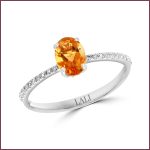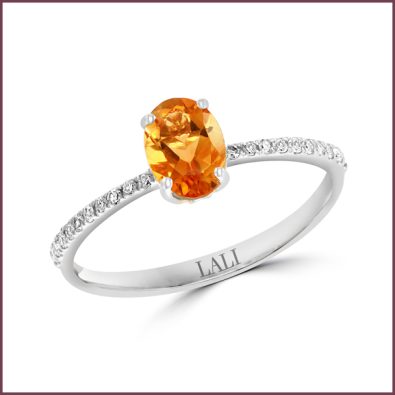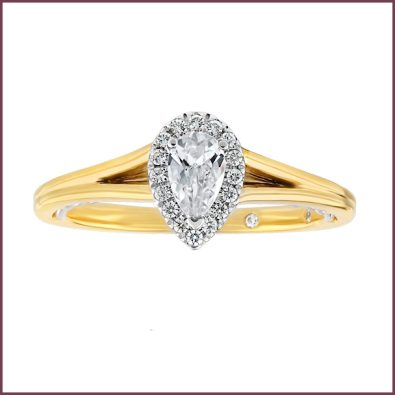Together We Can Make Diamonds Great Again
Stronger together, one of the mantras on the 2016 presidential campaign trail speaks to what many diamond manufacturers feel the industry needs to do to reach today’s millennial consumers. And, like the other campaign cry, they want to make “diamonds” great again for a new generation.
There’s a lot of buzz about the new generic diamond campaign by the Diamond Producers Association (DPA), a coalition of seven major diamond producers that represent 75 percent of the world diamond production. The founding companies, including DeBeers, Rio Tinto, and Alrosa got together a year ago to focus on understanding and targeting millennials. After six months of research, it’s launching its “Real is Rare” marketing platform in late September.
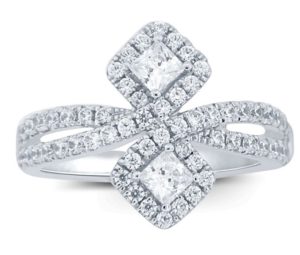 Created by agency partner Mother New York, the campaign speaks to millennials’ desire for genuine relationships that are hard to find in a world of virtual and superficial interactions, and positions diamonds as the ideal symbol of what is rare and precious. The rollout will target millennials on digital platforms where they already consume media. DPA will run ads and videos it produces, as well as work with bloggers and websites deemed influencers to create content compelling to their followers. The initial media plan has a $12 million spend.
Created by agency partner Mother New York, the campaign speaks to millennials’ desire for genuine relationships that are hard to find in a world of virtual and superficial interactions, and positions diamonds as the ideal symbol of what is rare and precious. The rollout will target millennials on digital platforms where they already consume media. DPA will run ads and videos it produces, as well as work with bloggers and websites deemed influencers to create content compelling to their followers. The initial media plan has a $12 million spend.
Ads will run through November before the media scene becomes overcrowded in December, the main holiday advertising period for U.S. retailers, cites Michael Pace, interim managing director. Although there will be no trademarked collateral for manufacturers and retailers to use this quarter, DPA encourages jewelers to incorporate the ideas of authenticity, trust and transparency into their presentations. The group is developing a trade section on its website to present insights and inspirations as the campaign develops.
“We need to think about this as an industry and come up with innovative ideas and ways to work together,” Pace says of the platform. “It will be a process that will take some time. If the industry does not engage millennials now, it risks diamonds losing their relevance for generations to come.”
Wake Up Call
Many diamond manufacturers believe diamonds ceased to be a cultural imperative when the industry dropped generic diamond advertising. “Real is Rare” is the first category marketing campaign in more than five years.
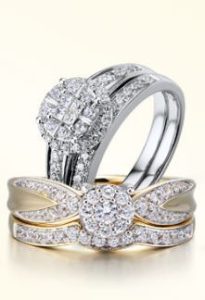 “This is a wake-up call,” says Corinna Bhasin, general manager, F.D. Worldwide Merchandise Group, New York, who hails it long overdue and much needed. “We need more promotions. We must work together to target consumers.”
“This is a wake-up call,” says Corinna Bhasin, general manager, F.D. Worldwide Merchandise Group, New York, who hails it long overdue and much needed. “We need more promotions. We must work together to target consumers.”
Concurs Rebecca Foerster, executive vice president of strategic planning and marketing, Leo Schachter Diamonds, New York, who describes DPA’s research and messaging as “compelling” and reflecting what her company found in its own studies. “These consumers are desperate to have this connection in their lives.”
Nick Parekh, president of Laxmi Diamonds, New York, says the industry needs the marketing muscle of a group like DPA to lead the charge, but stresses it must be a shared effort, with vendor-retailer partnerships an important component.
Vendor Partnerships
Jewelers who are most successful in the market today are working with strong vendors who help them buy smart and sell through effective programs that tell stories and set them apart from the competition—distinctive collections and private label, special display and packaging, targeted social media and marketing support, says Alok Mehta, president and CEO of IDD, New York.
Now more than ever, vendor partnerships are critical to success, says Foerster, who notes that retailers, especially independents are at a deficit in staff, time and money to create effective programs. “We’re a fragmented industry, everyone with their own agenda. As manufacturers, we must help bring relevance back to diamonds that has been lost to other products and categories. Manufactures who think this way will be the ones to lead retailers to the next level.”
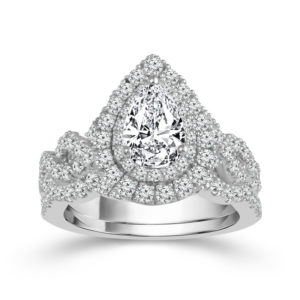 Joseph Green, executive vice president of sales for Leo Schachter Diamonds says that the challenge today is an overlap in competitors because of digital capabilities. “When we speak with our retail partners we almost always find they’re going to market with the same certificates, same qualities, same sizes of diamonds—a heavily commoditized presentation. The goal is to find a way to present your inventory so you’re attractive to your customers and meet their needs in value, quality and service beyond color and clarity comparisons.”
Joseph Green, executive vice president of sales for Leo Schachter Diamonds says that the challenge today is an overlap in competitors because of digital capabilities. “When we speak with our retail partners we almost always find they’re going to market with the same certificates, same qualities, same sizes of diamonds—a heavily commoditized presentation. The goal is to find a way to present your inventory so you’re attractive to your customers and meet their needs in value, quality and service beyond color and clarity comparisons.”
The solution is to differentiate your presentation, says Green, the concept behind four turnkey programs launched by the diamond brand in June: AGS Essentials, Private Label Bridal, Ideal By Schachter, and Schachter Select. Among the benefits are unique diamond certificates, branding opportunities, customized display systems and advertising assets, sales training and incentives, customer loyalty program, and virtual inventory tools.
Despite the challenges the Internet presents, Jay Gerber for WR Cobb, East Providence, Rhode Island says jewelers without a strong online presence and virtual inventory capabilities will not succeed. “Whether a consumer ends up buying online or not, just to know they can’t is a problem. Millennials are buying diamonds, jewelers just need to revise the business model. With the amount of choice consumers are given in other industries, it’s necessary for diamond manufacturers to offer retailers wider inventory access and fast service.”
Jewelers need to incorporate technology in the way consumers are using it today, says Gerber, who notes that his company offers an engaging ecommerce platform with assets like 3D images and loupe magnification. Companies like WR Cobb that have a strong virtual inventory component also provide vital data in the diamond category to help jewelers create digital platforms that work for them.
